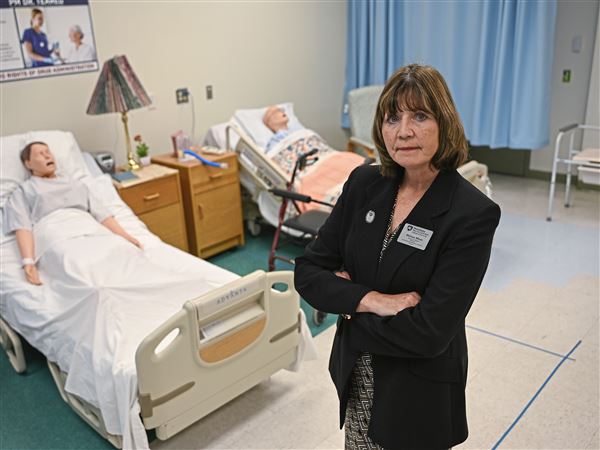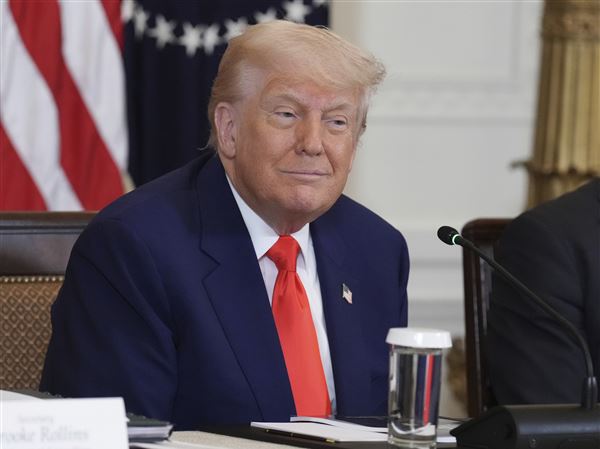On the Carnegie Mellon University campus, one expects to find advanced research in software, robotics, physics and many other academic disciplines.
What one might not anticipate is a laboratory focusing attention on, of all things, toys -- real toys that children actually enjoy.
Not to confuse CMU with Mattel or Hasbro, but there in Margaret Morrison Carnegie Hall, Mark Gross, a professor of computational design in the School of Architecture, is helping doctoral students develop toys notably smarter and more complicated than the Lincoln Log, Hula Hoop or Slinky.
CMU "constructional logic kit" toys, "roBlocks" and "Posey," are designed to spawn interest in science and robotics while teaching logic, reasoning and problem-solving skills often overlooked in conventional classrooms.
"We want to get kids thinking spatially and visually," Dr. Gross said, noting the importance of nurturing abilities in computational thinking. "Schools teach basic skills and emphasize test scores. What they don't teach people is how to make things.
"Our agenda is to get children and people to understand the world by making and learning complex processes," he said.
Doctoral student Eric Schweikardt, continues refining computerized blocks he created to be assembled into simple robots.
Each block has magnetic connectors with circuitry and a computer chip inside. The toy meets the simple definition for robot as "anything that senses, plans and acts."
"A robot doesn't have to look like C-3PO," Mr. Schweikardt said, referring to the famous humanoid robot in "Star Wars."
Blocks of various colors in his constructional kit respond to light, sound, touch, temperature, humidity and the presence of other objects, while others can plan, alter signals, provide power or offer a means of movement.
"So a roBlocks robot could respond to all sorts of environmental conditions including light levels, sound, other robots or temperature and humidity and react accordingly," Mr. Schweikardt said.
Children quickly learn each block's purpose and assemble robots that perform various functions. "It's a way for children to learn to think logically about the world," Mr. Schweikardt said.
After many prototypes, roBlocks has withstood rigorous play by Sto Rox Middle School students, who created notable robots, including one that used all 20 blocks stacked atop one single block that was able to move, albeit slowly, the entire mass.
"Boys and girls both enjoyed playing with them, and I definitely see how you could use roBlocks in the classroom," Katie Levedahl, a seventh-grade science teacher at the middle school, said. "It promotes scientific inquiry, gives them a chance to use their hands and understand the basic processes related to robotics.
"It gives kids an opportunity to be curious about science and build things for themselves," Ms. Levedahl said.
Mr. Schweikardt said his roBlocks, unlike traditional robots, do not need to be programmed to perform specific functions. Rather than rely on a central processor or brain, the blocks each play a role in a coordinated effort.
Michael Philetus Weller, another doctoral student under Dr. Gross' guidance, has created "Posey," which advances the "hub and strut" concept used by the toy Zoobs into an interactive computer-based toy.
Posey can be assembled into physical structures that appear on a computer screen. The program allows one to turn the computer image into a puppet that moves based on actual movement of the hand-held structure that one has built.
One also can use Posey to make models of molecular structures which the computer program identifies, be it ammonia, alcohol, methane or hydrogen peroxide. Chemists already are interested in its potential for teaching students molecular structures.
Mr. Weller also created the puzzle game, "Escape Machine" that can only be solved with help from a Posey structure. It's difficult to explain, but changing the shape of the structure in hand, or movement of it, determines movement of the main character and its pursuers inside the maze shown on the computer.
The physical structure that one builds is used to manipulate movement of the characters in the maze.
Both doctoral students are refining their games for use in museums or for the toy market.
"In the broader picture, we're making stuff to engender in children a more powerful self-awareness and love of thinking and learning through making stuff," Dr. Gross said.
"We want them to wake up and think for themselves," he said. "We expect a real impact on children's lives."
First Published: May 14, 2008, 8:00 a.m.
















